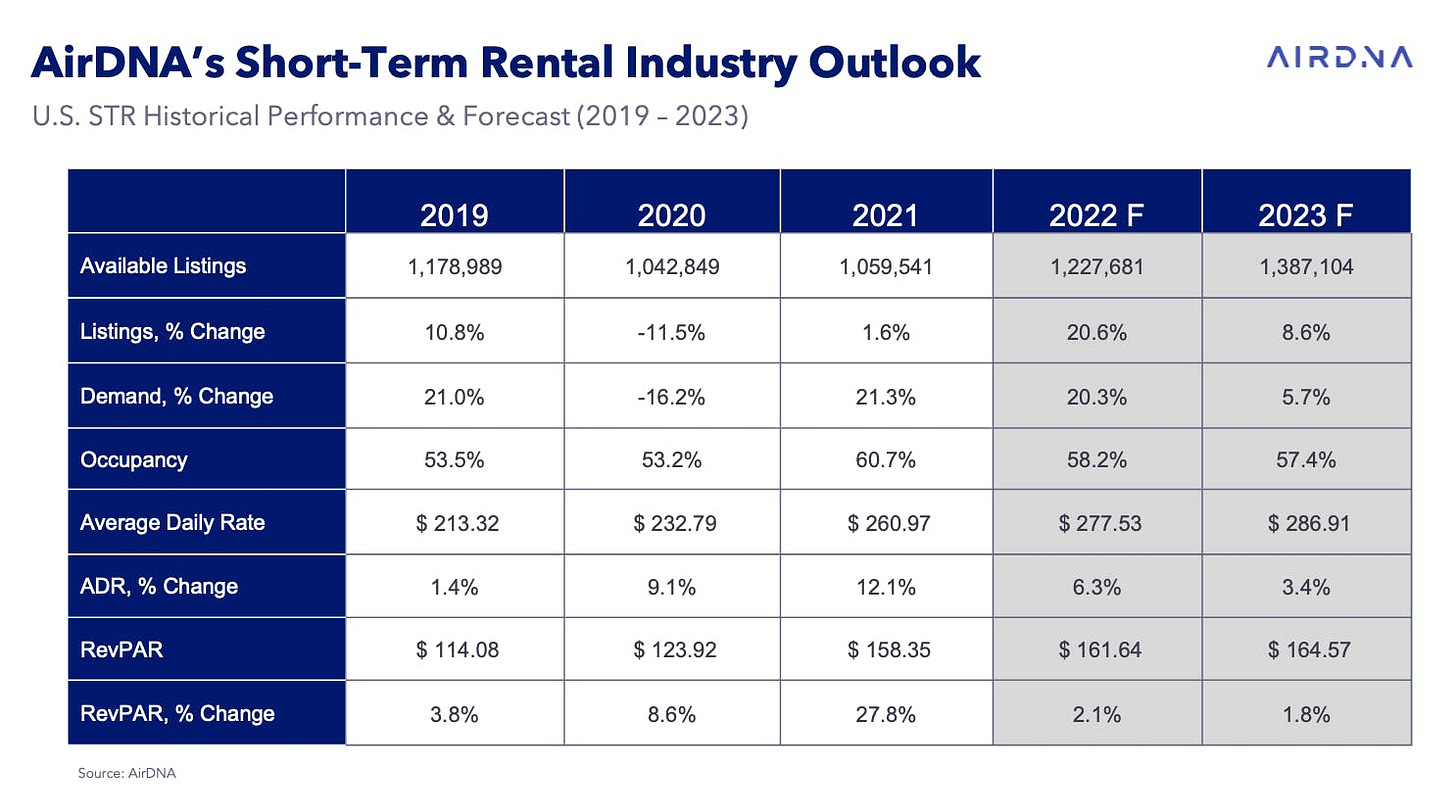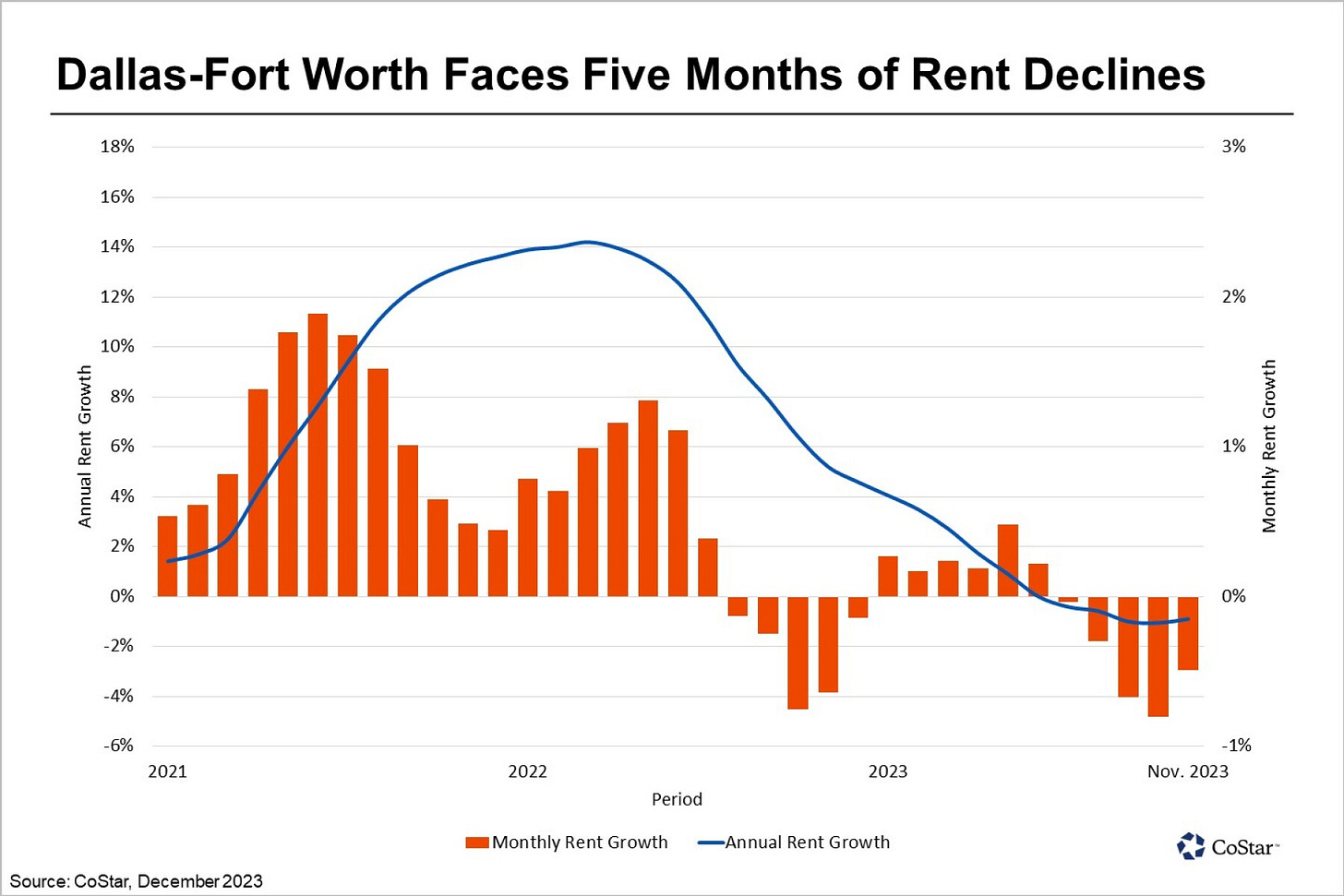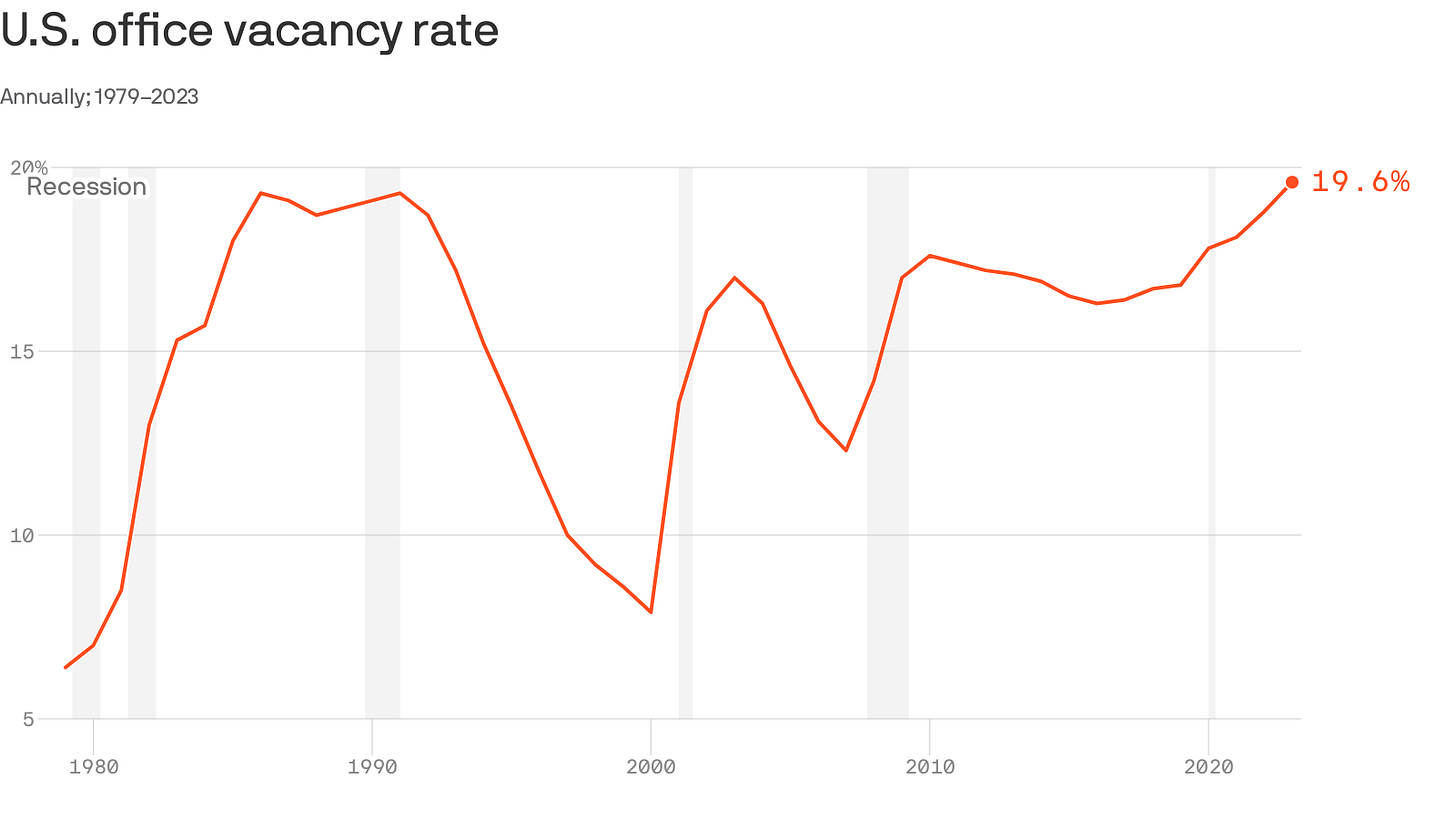Why Blackstone Distributable Earnings and Fund Inflows Surged Last Year
+The Atlantic asks the question: Are the suburbs a Ponzi scheme?. Read the most important stories in CRE here---->
BLACKSTONE Q4+FULL YEAR 2023 EARNINGS
Blackstone’s Q4 and full year 2023 earnings are out, with the past year or so for the firm a decidedly mixed-bag.
Blackstone (BX) Stock Gains as Q4 Earnings Beat Estimates
📉 Valuation Vexations: A quarterly earnings dip has emerged, mainly influenced by the declining value of real estate investments. This downturn mirrors broader market trends that are reshaping asset valuations.
📈 Distributable Earnings and Fund Inflows Surge: Despite these valuation challenges, Blackstone has reported its highest distributable earnings since Q2 2022. Alongside this, fund inflows have surged to their peak since the same period last year. These figures suggest a resilient segment within the firm's diverse portfolio.
💰 Capital Deployment at Its Zenith: Blackstone's report points to an aggressive investment approach with capital deployment reaching its pinnacle since Q3 2022. For commercial real estate investors, this indicates potential growth areas within an otherwise uncertain economic climate.
🔮 Signs of Market Rejuvenation?: These robust figures in distributable earnings and capital deployment might hint at emerging recovery signs after periods marked by weak fundraising and deal-making across the industry—a pulse check for those invested in commercial real estate's future.
Stock Watch:
Blackstone Inc. (NYSE: BX): $123.98 USD (+2.78%)
⚖️ GAAP Results Under the Microscope:
- Net Income for FY 2023 stands firm at $1.4 billion.
- Management and advisory fees boast approximately $6.7 billion in revenue.
- Incentive fees contribute nearly $700 million.
- Performance allocations reveal a significant decline from previous years—a metric not to be overlooked by discerning investors.
🏗️ Fee-related Earnings Show Steadiness: Throughout fiscal uncertainties, fee-related earnings have displayed remarkable stability—an indicator of reliable revenue streams amidst fluctuating sectors.
🔄 Asset Management Flourishes
- Total Assets Under Management now exceed $1 trillion, signaling substantial growth and market confidence.
- Annual inflows reach approximately $148.5 billion—evidence of robust investor interest and dynamic fund activity.
- Deployment and realization numbers underscore the firm’s assertive investment strategies.
💵 Dividends & Repurchases Signal Confidence
- Dividends per common share tally up to $3.35 for the year.
- Share repurchases stand out with 3.7 million common shares bought back over the year—a strategy often interpreted as a signal of corporate self-assurance in intrinsic value.
⚠️ Strategic Takeaways for CRE Investors
Commercial real estate investors and stakeholders should ponder several strategic insights:
🌐 Global Positioning & Investment Horizon: Steadfast capital deployment amidst valuation setbacks reveals Blackstone’s belief in seizing long-term value creation opportunities within global commercial real estate markets.
💼 Diversification & Risk Management: The evident asset management growth across various funds suggests diversification remains key—a takeaway for CRE investors considering broadening their portfolios or employing hedging strategies amid market volatilities.
🚀 Forward-Looking Investment Opportunities: High inflow numbers signify strong investor appetite within certain segments; shrewd CRE investors could see this as an opportunity to identify which areas are drawing attention despite wider economic pressures.
Full earnings report as a PDF, here.
Links of the Day
🧑🏫️Our Picks
Ponzi scheme suburbs? 📉 A new book reveals how white families' exodus from the suburbs saddled incoming Black and Latino residents with economic decline, challenging the myth of suburban prosperity as a universal American dream.
Big Short's Lippmann eyes CMBS gold: 📈 Betting on undervalued commercial-property debt, LibreMax and DoubleLine see a rebound as Fed rate cuts loom.
Real Estate Rebound on the Horizon: 🏗️ BlackRock signals 2024 as a prime year for CRE investment, post-downturn recovery promising strong returns amidst tighter credit and lower development rates.
Aging Abodes Adapt: 🛠️ Faced with a median home age of 40 years and soaring renovation costs, U.S. homeowners pivot to 'home hardening' strategies to safeguard against extreme weather events.
Frost Bites Home Market: 🌨️💸 Despite a frosty decline in homebuying activity due to harsh winter weather, median sale prices remain heated at around $360,000. Redfin cites an 8% year-over-year dip in pending sales.
SF's Solo Women Take Charge: 🌉 In a striking reversal of past financial norms, single women now lead the San Francisco real estate market, owning more homes than their male counterparts.
Merger Moves & New Missions: 🏘️ Key NYC landlord associations RSA and CHIP discuss unifying forces, amidst the birth of AREA aiming to revolutionize real estate trade group expectations.
Sports Exodus Shocks DC: 🏀🏒 Capitals & Wizards gear up for a game-changing move to Virginia, leaving D.C.'s real estate market in a strategic timeout. Will this pivot lead to a rebound or an economic foul?
🏭Industrial
Vegas Velocity: 🎲🏭 With a booming labor force and $150M+ in economic incentives, Las Vegas emerges as an industrial powerhouse. A tax haven with a strategic logistics network, it's set for explosive growth and major events like Super Bowl LVIII.
LBO Icon Targets Housing: 🏘️ David Rubenstein, with a $400M fund, eyes lucrative opportunities in multifamily housing and industrial spaces during sector slump.
Manufacturing Momentum: 🛠️ Despite low vacancy rates and scarce inventory, Albuquerque's potential for industrial growth shines as real estate leaders navigate the challenges of a slow-to-develop market.
👪 Multifamily
Out with the old, in with the new in Richardson: 🏗️ JLB Partners to transform a dated office building into a sleek $70M apartment complex, adding 390 homes to Dallas-Fort Worth's housing market.
Foundational Forecast: 🏗️ As real estate prices find their footing, Blackstone’s top executive Jon Gray stresses the importance of increasing the pipeline of new homes.
Haruvi Heir Hits a Wall: 🚫 A judge dismisses Michelle Haruvi's case against her father and his business partner, citing her own messages that contradict her surprise over a $165M refinancing deal. The family saga unfolds with an $80 million buyout and looming eviction.
Nashville's Vacancy Volume: 🤠 With an 11% multifamily vacancy rate towering over the national average, the city faces a symphony of uncertainty as 34,000 apartments await occupants. Will demand hit the high notes required?
🏷 Retail
Retail Realty Revamp: 🏪 CNSREIT joins forces with Sterling Organization to acquire a major portion of Dallas' Marketplace at Highland Village, as high-income growth fuels investment in Sun Belt shopping centers.
S.F. Retail Retreat: 🛍️💔 Acclaimed Mazarine Coffee and yet another Walgreens bid farewell to downtown, as the city's commercial landscape faces ongoing closures.
🏨 Hotel
Check-in or check-out? 🛎️ U.S. hotel occupancy dips by 3.8%, with Seattle bucking the trend, boasting a near 10% surge.
💼 Office
Office Ups & Downs in Philly: 📊 A tale of two markets - booming constructions driven by life sciences clash with a steep investment drop. Find out how Philly fared against its peers?
Return-to-Office Rebuttal: 📇A new study scrutinizing Fortune 500 companies' performance with return-to-office mandates faces criticism for shaky methodology and questionable metrics, igniting debate on effective workplace strategies.
New hub for hustlers: 🌿🏢 Above S.F.'s Ikea, Hej!Workshop debuts with private offices & lush common areas. Aimed at the flexi-workforce, it's a fresh take on coworking in a post-remote work era.
Memphis Office Expenses Soar: 🚀 A new Trepp report places Memphis in the top 10 cities for rising office operating costs, leading with a notable 22.7% year-over-year increase—yet it still outperforms others with minimal revenue decline.
Empty Offices, Expensive Premiums: 💼 Record-high vacancies trigger costly consequences for office building owners. Insurance premiums jump as unrented spaces increase the risk of loss and damage.
💲CRE Finance
Blackstone's Balancing Act: 💼📉 Profits dip with real estate values, but the investment titan marks a peak in distributable earnings and fund inflows since Q2 2022. Signs of industry recovery on the horizon?
Property play in the city that never sleeps: 🌆 SL Green Realty sets sights on a hefty $1 billion fundraise to capitalize on New York City's lucrative real estate debt sector.
Dallas' CRE Dominance: 🏙️ Despite a steep 58% decline in transaction volume, Dallas-Fort Worth remains the U.S. leader in commercial real estate investment for the third consecutive year, with $19B in deals.
Commercial crunch hits hard: 📉 A staggering 51% dive in deal volume for commercial properties echoes the shadows of the Global Financial Crisis. With every sector reeling from double-digit declines, the real estate market braces for a bumpy road ahead.
⏰️Crime Time
IRS crackdown in Granby: 🚨 Two commercial properties, Jackson Family Tire and Ed's Auto Body, face the hammer as federal agents enforce a tax lien foreclosure, sparking local concern and an auction showdown.
Banking on transparency: 🏦 The SEC probes regional and community banks for a clearer picture of their commercial real estate risks, as loan defaults loom and echo the financial crisis fears.
🛍Grab Bag
FinTech fusion: 💻📊 Gateless's Smart Underwrite joins forces with Equifax for seamless employment data access, accelerating the loan approval journey for borrowers and lenders alike.
Green Surge Amidst Grey Skies: 🌱🔋 China's clean energy investments soar, injecting a robust 40% into its economic growth as the real estate sector crumbles. The pivot to renewables propels GDP to 5.2%, overshadowing the potential slump to 3%.
Property profits plummet for Blackstone pros: 💸 A stark 51% drop in the carry pool share for executives signifies a turbulent period in real estate, with President Jon Gray eyeing a turnaround in valuations.
Credit Lifeline in China: 🏗️ The People's Bank of China unveils new lending rules for property developers, aiming to ease a deep-set real estate crisis and rejuvenate the economy.
📊Daily Data Visualization
Office vacancies have climbed to unprecedented levels, with current rates outpacing those seen in the economic downturns of 1991 and 1986.
A New Peak in Office Vacancies Amidst Work Shifts
Recent data from Moody's Analytics reveals a stark reality for commercial real estate: office spaces are increasingly empty as companies embrace remote and hybrid work models, leading to a historic rise in unleased office space.
The shift reflects profound changes not only in how Americans work but also how cities and suburbs may be reshaped by these new work patterns. While these shifts occur gradually, their cumulative effect on the urban landscape is becoming more apparent.
Hybrid Work's Impact on Demand
2023 witnessed "the most downbeat" year for the office sector since the global financial crisis. Despite calls for workers to return to offices, full-time occupancy remains rare as flexible working arrangements become mainstream.
"If things do take a turn for the worst in 2024, [office vacancy] will probably just keep going for much of the year." - Nick Luettke, Moody's Analytics CRE
Redefining Urban Centers
The future could see central business districts transform into mixed-use hubs that blend office space with retail and entertainment—a pivot reminiscent of how e-commerce reshaped brick-and-mortar retail rather than eliminating it entirely.
Risk Assessment Amidst High Vacancy Rates
For property owners dealing with vacancies, this trend poses challenges. However, Moody's Analytics suggests that this won't translate into systemic risk for banks. Goldman Sachs analysts also note that commercial real estate risks have been factored into public debt markets.
Historical Context of Current Office Market Woes
This isn't just a pandemic phenomenon; roots can be traced back to overbuilding during boom times in the '80s. The subsequent recession created lasting impacts still evident today—particularly pronounced in Southern U.S. cities like Houston and Dallas where construction boomed decades ago.
Today, Austin, Dallas and Houston had some of the highest vacancy rates in the nation.











